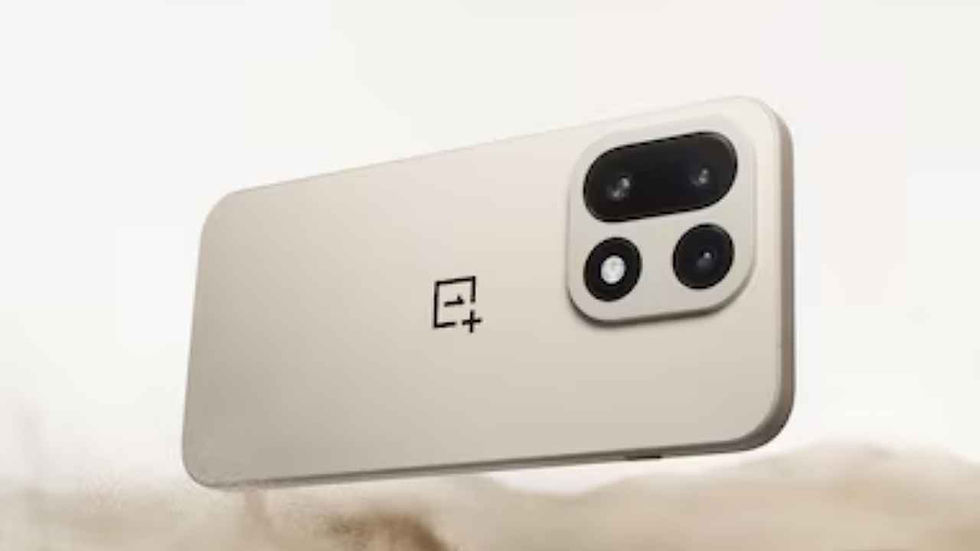India Opens 6 GHz Spectrum for License-Free Wi-Fi Use
- VIDHI AVTR

- May 30
- 4 min read
What you need to Know
India has proposed delicensing the 5925–6425 MHz band for unlicensed use, enabling Wi-Fi 6E and Wi-Fi 7.
Public Wi-Fi deployment in rural and underserved regions will become more feasible and affordable.
The economic impact of this move is estimated to generate ₹25,000 crore in value.
The government takes a balanced approach by delicensing only 500 MHz while keeping the rest for future use.
This decision empowers digital inclusion, startup growth, and better connectivity nationwide.

In a historic step to transform internet connectivity throughout the nation, the government of India has published draft rules to delicense the 5925–6425 MHz range of the 6 GHz band. This historic step facilitates the unlicensed operation of future wireless technologies such as Wi-Fi 6E and Wi-Fi 7, placing India among nations such as the United States, the UK, South Korea, and the EU that have already opened up this band.
But what does it imply for common users, tech giants, ISPs, and telecom firms? Let's take it down to earth.
What Is the 6 GHz Spectrum and Why Does It Matter?
The 6 GHz spectrum is the band of radio frequencies from 5925 MHz to 7125 MHz. However, the Indian government has suggested delicensing the lower 500 MHz segment (5925–6425 MHz) for public use, which is particularly important for:
Wi-Fi 6E (the extended edition of Wi-Fi 6)
Wi-Fi 7 (the new ultra-high-speed Wi-Fi standard)
These technologies need larger channels and less interference in order to offer higher speeds, reduced latency, and improved performance in dense environments.
By making this band available for license-free use, India is essentially laying down a huge highway for internet traffic without tolls.
Key Benefits of Delicensing the 6 GHz Band
1. Supercharged Wi-Fi Performance
Wi-Fi 6E and Wi-Fi 7 require wider frequency channels for gigabit-level speeds and real-time responsiveness. Delicensing this band allows:
More bandwidth for routers and access points
Lower interference compared to traditional 2.4 GHz and 5 GHz bands
Seamless video streaming, gaming, and online conferencing
2. Improved Rural and Public Connectivity
With affordable, license-free access, public Wi-Fi deployments in schools, hospitals, railway stations, and rural areas become more feasible. This supports the Digital India initiative by reducing the digital divide.
3. Lower Internet Costs
Since Wi-Fi offloads traffic from cellular networks, the need for expensive mobile data is reduced. This means:
Cheaper internet for users
Less congestion on 4G/5G networks
Reduced infrastructure costs for operators
4. Global Alignment
Many developed nations have already opened up the 6 GHz band for Wi-Fi. By aligning with global best practices, India encourages:
International hardware compatibility
Cross-border tech innovation
Easier product launches from global manufacturers
5. ₹25,000 Crore Economic Impact
A study suggests that unlocking this band can unlock up to ₹25,000 crore ($3 billion) in economic value by:
Boosting startups
Driving enterprise-grade wireless innovation
Supporting remote work, education, and healthcare
The Telecom Industry’s Opposition
While the technical community, including behemoths like Google, Meta, and Qualcomm, has generally appreciated this development, telecom operators are emphatically opposed. Their key reasons:
1. Reserved for 5G?
Telecom players contend that the 6 GHz band must be saved for 5G expansion, especially to provide the IMT-2020 standards set by the International Telecommunication Union (ITU). They think:
Cellular networks require this spectrum for mid-band 5G
Delicensing may limit their capacity to provide ultra-reliable low-latency services
2. Loss of Revenue
In contrast to licensed bands, which are sold for huge amounts in auctions, unlicensed spectrum produces no immediate revenue for the government. Telcos caution that this may:
Weaken the current auction-based spectrum economy
Develop an unbalanced level playing field for telcos and Wi-Fi operators
3. Challenges in Spectrum Sharing
Both Wi-Fi and 5G sharing the same band may cause interference and thus degrade network quality for licensed users.
The Indian government's delicensing of the 6 GHz band reflects a wise and visionary approach of striking a balance of various interests. Instead of auctioning off the whole 6 GHz spectrum or allocating it entirely to telecommunication operators, the government has suggested delicensing only a part of it namely the 5925 to 6425 MHz band. This 500 MHz slice is now going to become available for unlicensed use, mainly for technologies such as Wi-Fi 6E and Wi-Fi 7. Where this move is intelligent is that it does not commit the whole spectrum to one application. By delicensing only the lower portion of the 6 GHz band, the government has left the rest of the upper segment (6425–7125 MHz) open for future assessment, thereby allowing it to be used later for 5G, shared use, or even newer technology that might be developed.
This balanced action has a number of advantages on the table. First and most importantly, it enables quick fixes to broadband connectivity throughout the nation, particularly in underserved and rural communities where traditional mobile networks or fiber may not always be viable. It also avoids a situation in which the spectrum is controlled by a handful of major telephone companies, allowing tech companies, startups, and public service providers to get access to this vital wireless highway. Most significantly, this plan promotes a coexistence paradigm, in which both licensed 5G networks and unlicensed Wi-Fi ecosystems can thrive together. Essentially, it's a win-win strategy that places India well on its way to creating a digitally inclusive and innovation-friendly future.
What This Means for You and Me
Area | Impact |
|---|---|
Home Users | Faster, more stable Wi-Fi connections with new routers |
Offices & Enterprises | High-speed wireless backhaul without laying fiber |
Schools & Villages | Cost-effective internet connectivity |
Tech Industry | Greater innovation in IoT, smart home, and AR/VR |
Startups | More opportunities to build local Wi-Fi and mesh networking solutions |
What’s Next?
The draft regulations are currently open for public consultation. Based on feedback from stakeholders, the Department of Telecommunications (DoT) will finalize the rules for implementation.
Expected developments in the coming months:
Final notification on spectrum delicensing
Launch of 6E and Wi-Fi 7 certified devices in India
Development of large-scale public Wi-Fi infrastructure
India's move to delicense the 6 GHz band is a giant step for affordable high-speed internet availability. Although concerns raised by telecom operators are valid, the overall advantage particularly for startups, consumers, and rural India cannot be denied.
In a nation with more than 800 million internet users, this action can revolutionize the way we browse the web, work, study, and communicate.
Stay posted on AndroBranch for the latest on how this step transforms the digital landscape in India from Wi-Fi routers to 5G integration and more.













Comments